October 30th
First light. A sky the colour of a starling’s egg. As I lace my boots I notice a solitary gilded cloud in the north-east. It looks like an Elizabethan galleon. Getting ready to set sail for El Dorado perhaps. Its anchor must be lodged in the font of St Mary Magdalene’s Church in Mawdlam. Meanwhile the Hunter’s Moon, still bright in the west, is polishing its arrows in Kenfig Pool.
Shaggy Ink Cap (Coprinus comatus) Kenfig
I’m looking for mushrooms. And yet, the season is late. I’ve been on mushroom forays three times in the last month and found very little. The mild weather has delayed the usual fungal abundance. But nothing is on time these days. The times are out of joint, I mutter, stroking my beard as I trudge down the driveway to the road, shouldering my empty haversack. Because we are caught in two minds. Or between two minds: the past and the future are fighting over the present. Perverse outcomes proliferate. Which way do we go? Thankfully such portentous thoughts are dispelled when I notice that a fresh and perfectly formed shaggy ink cap has sprouted from the roadside verge outside my gate.
Always grasp a good omen, that’s my motto. The shaggy ink cap (Coprinus comatus) has a reputation for being excellent to eat, and it certainly looks appetising. They seem to grow particularly well on roundabouts, and mysteriously, are especially common on the Brackla housing estate. That’s where I first found them, many years ago. But I had always thought that they were poisonous if eaten with alcohol, and so, as many of my meals tend to include alcohol, I’ve never sampled them. But it seems that I’m mistaken. Apparently it’s a cousin mushroom, the common ink cap (Coprinopsis atramentaria) that has this unfortunate puritanical effect. The guides give contradictory advice.
But it’s good to be cautious with wild mushrooms. There are a few I’ll eat with confidence, but everything else gives me enough doubt that I won’t take the risk. Because, as we all know, there certainly is a risk. Even experienced mycophagists have made dinner out of a deadly mistake. The tasty blusher looks disconcertingly similar to the ferocious panther cap. Sitting quietly among the fairy rings of the edible champignon, look, a solitary and seriously poisonous fool’s funnel – make sure you notice it. And here are some satisfyingly meaty young parasols – or are they in fact the liver destroying dapperlings? Mushrooms occupy a twilight zone of danger and charm, gourmet delicacy and gastrointestinal distress.
Fly Agaric (Amanita muscaria) via Wikipedia
Perhaps no mushroom better encapsulates this ambiguity than the iconic red and white-spotted Amanita muscaria, or fly agaric. This is the fairy tale mushroom familiar from a thousand picture books and undoubtedly one of the most majestic things you’ll find in the woods. Consistently labelled as poisonous or toxic it is in fact perfectly edible - if prepared correctly. This is true of a number of other mushrooms – the morel for example must be cooked, so too the scarletina bolete, the tawny grisette - but all are labelled as edible. So why the taboo with fly agaric? It may have something to do with the nature of its poisonous effects. Because alongside the accounts of stomach cramps and delirium we also hear ofFly Agaric (Amanita muscaria) via Wikipedia euphoria, wild bursts of energy, clairvoyance, synaesthesia and eventually deep sleep with powerfully vivid and meaningful dreams. And also, yes, communication with the fairies – much diminished these days they may be, but still making contact, now and then. But all of this drops us deep into the realm of superstition and paranoia. Such things were supposed to have been banished with the witches. So perhaps picking fly agaric became “poisonous” for religious reasons. We learned to avoid it for fear of gossip and a visit from the inquisitor with his toolkit. We know that many humble midwives and herbalists went to the gallows for collecting far more innocuous fare.
Elsewhere the fly agaric is highly valued. The bards of the Khanty in western Siberia, for example, would fortify themselves with a few dried mushrooms before embarking on an all-night recital of the songs and stories of the tribe. The mushrooms propelled them to feats of artistry unattainable by mere mortals – a performance enhancing drug for poets.
“Oh you little gold-stiped fly-agaric, chao-chao-chao,
Such tiding you brought me, chao-chao-chao,
Little patterend-stiped fly-agaric, chao-chao-chao,
Many messages, many words you have, chao-chao-chao,
(An unknown word) is placed on golden grass, chao-chao-chao.”
Khanty Song
I’d have to head over to the woods of Mynydd Margam if I wanted to have lunch with a fly agaric today. It doesn’t grow in Kenfig as far as I know. I have eaten it a few times in the past though and can confirm that it is very tasty indeed.
Beetle on Parasol (click to enlarge)
But the day has gone well. Bracket on aspen, tiny scarlet elf-cups, earthballs, those stony nuggets, waxcaps, the lilac tinted wood blewit, translucent porcelains, a few huge meadow puffballs, milkcaps, jelly ears and many more that I’m unable to even tentatively identify. And what is this? Could it be one of the tropical Megalodacne, dining on a rotten shaggy parasol?
Which reminds me it’s nearly dinner time. Yes, maybe I will try that shaggy ink cap after all - sliced and fried in butter and served on toast? Surely delicious with a glass of velvety Pinot Noir?
Careful now…

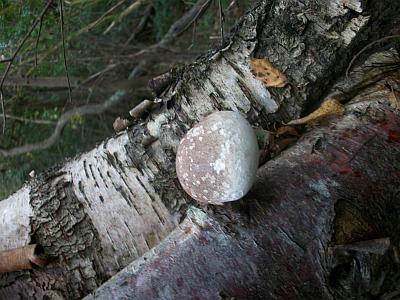
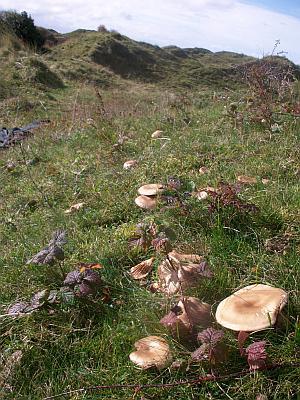
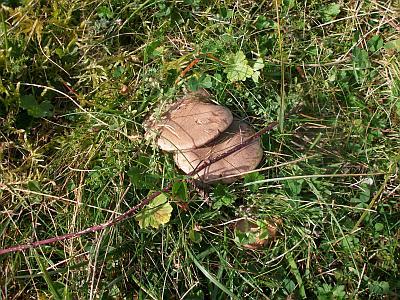
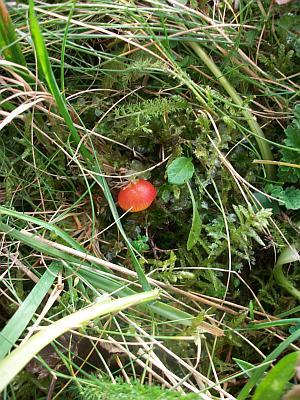
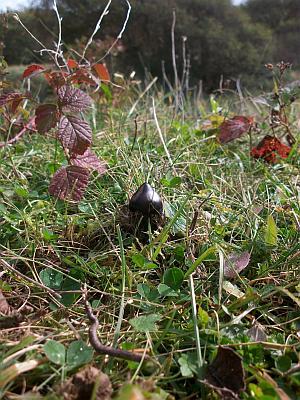
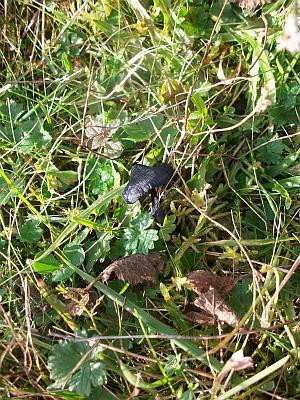
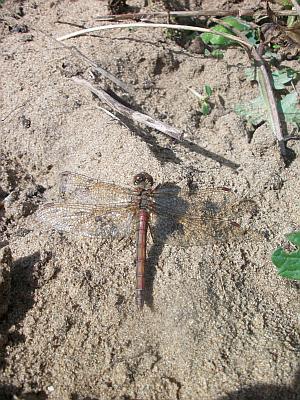
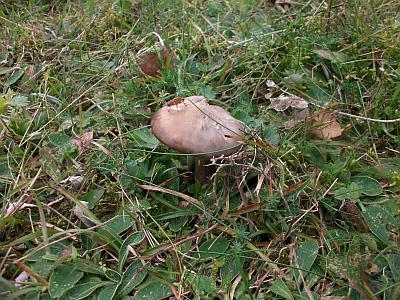
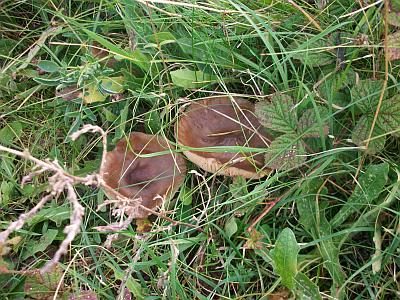

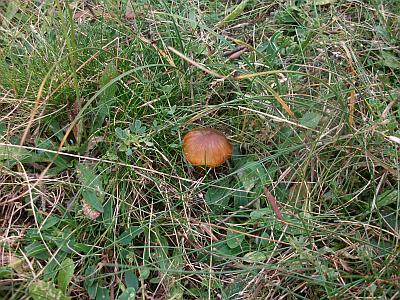
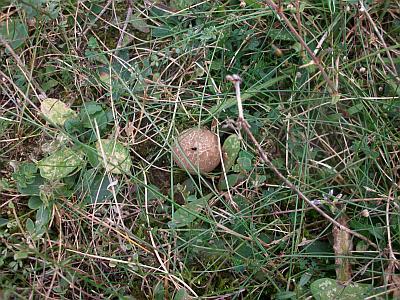
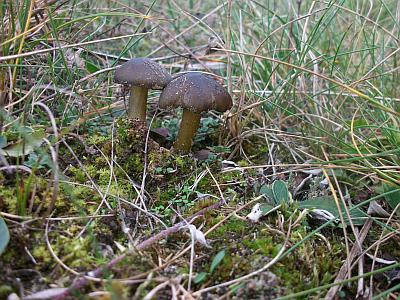
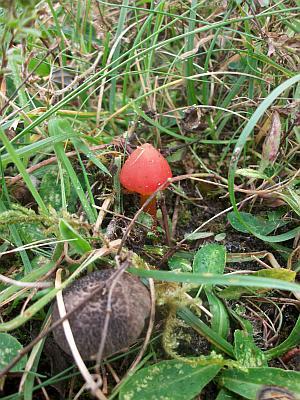
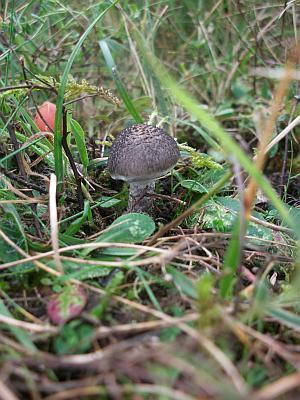

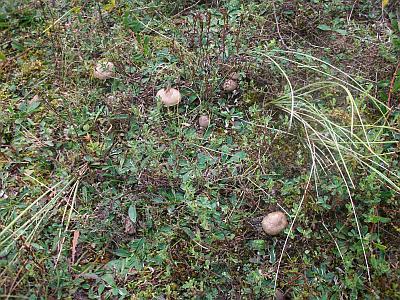
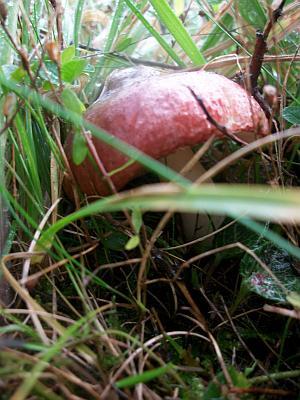
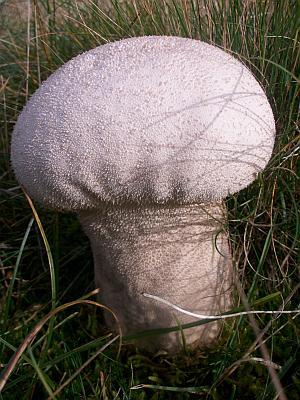
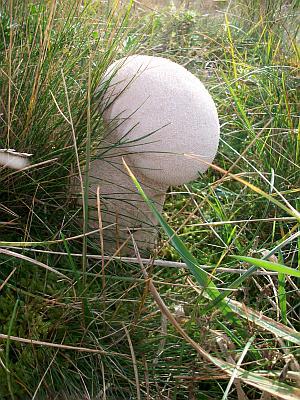
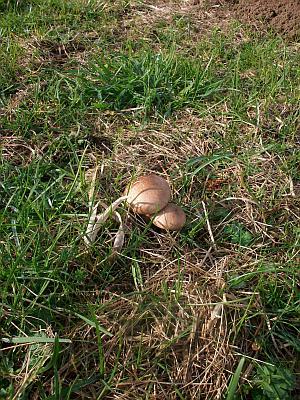
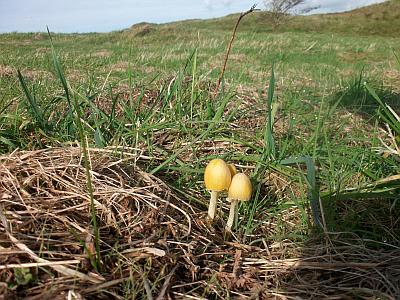
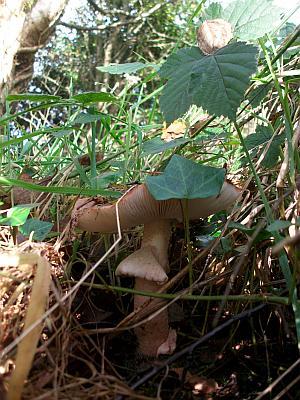
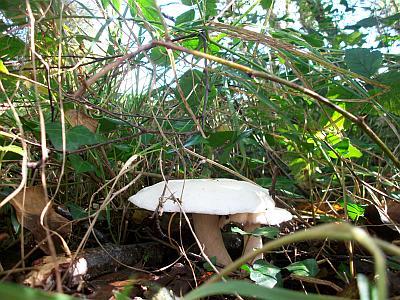
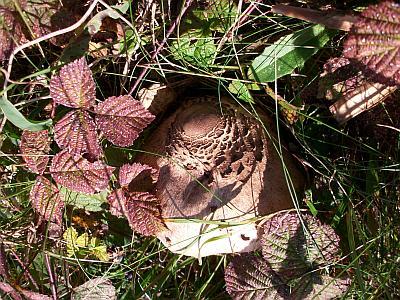

Kenfig Journal by Kristian Evans
Kristian Evans is an artist and writer from Bridgend interested in ecology and the ways we think about and interact with the “other-than-human” world. He has lived in Kenfig for five years. His performance installation “The Mirror’s Grain,” written with Tracy Evans, was launched at the Kenfig National Nature Reserve Centre in May 2010, as part of the “Mouth to Mouth” series of events organised by Arts for the Earth. The Kenfig Journal will appear here regularly.
@kenfigdunes on twitter


